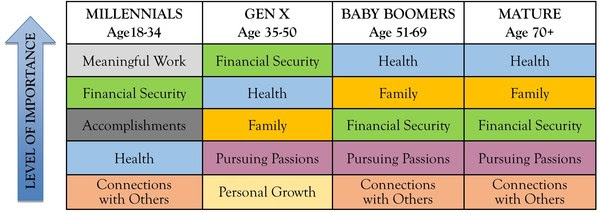How do your major donors define “a life well-lived”? This is one of the key questions addressed in the 2015 Insights on Wealth and Worth Survey, conducted by the U.S. Trust. Since 1993, this periodic survey of wealthy individuals and families has highlighted differences and similarities in values and, ultimately, what motivates giving. This year, 640 high-net-worth adults (with at least $3 million in investable assets, not including the value of their primary residence) took part in the survey.
When these individuals were asked to identify the attributes of “a life well-lived,” their responses included:
• Health, family and financial security
• Connectedness and personal growth
• Making a difference in the world
The surveyed individuals also cited areas of life where they felt they should be giving more attention; No. 2 was “giving back to society.” Furthermore, the study found that millennials, women and those with the greatest level of wealth are most interested in socially and environmentally responsible investments.
Values of High-Net-Worth Individuals

So, what are the key takeaways and how do we use this data to advance and enhance our fundraising efforts?
• Focus on in-person meetings and site visits. High-net-worth individuals want to feel connected to the organizations to which they give back, and these touch points help build a personal relationship between the organization and donors. If possible, let them see how their gifts will make a difference.
• Create an emotionally resonant case for support. This demographic is motivated by deeply personal values (such as setting an example for their children), so a strong case for support will speak to the emotional connection constituents have with your organization.
• Investment = Impact. High-net-worth individuals want to see their investment have an impact, via regular updates with specific ways their gift is being used. These personal communications will lead to lifelong relationships and deeper involvement.
• Keep your eyes on the greater good. Spend time crafting a strategic vision for your organization and shape thoughtful language to express this to donors. More and more high-net-worth individuals—specifically millennials, women and those with greatest level of worth—are highly interested in knowing how your organization’s work will go beyond just your mission statement and those you serve.
See related blog articles:
Connecting with Millennials: How Nonprofits Can Build Relationships with Tomorrow’s Leaders
June 2013, by Victoria Dietz
Study Finds Baby Boomers Give the Most, Among Other Generational Trends
September 2013, by Robin Paez




Leave a Reply